Jeeps have long held a storied place in the automotive world, synonymous with rugged off-road capability, adventurous spirit, and a no-nonsense approach to conquering the great outdoors. From their origins as military workhorses to becoming some of the most beloved consumer SUVs, Jeeps have cultivated a loyal fan base that values durability, simplicity, and versatility.
However, not all Jeep models are created equal when it comes to daily driving, especially on paved roads. While some Jeeps thrive not only on the toughest trails but also deliver surprisingly comfortable, reliable performance for everyday use, others reveal inherent weaknesses that limit their longevity and comfort in urban or highway environments.
Understanding these differences is key for prospective buyers or enthusiasts who want a Jeep that truly matches their lifestyle, whether that means tackling dirt, rocks, and mud daily or enduring the often punishing realities of pavement and traffic.
This article aims to shed light on both ends of the spectrum by identifying five Jeep models that excel as daily off-road vehicles, built to handle the relentless demands of rough terrain without compromising reliability or driver comfort.
These models stand out because of their superior hardware, engineering focused on durability, and thoughtful balance between off-road ruggedness and on-road usability.
Equally important, the discussion will highlight five Jeeps that struggle when primarily used on paved roads—vehicles that often suffer from uncomfortable rides, mechanical fragility, or maintenance headaches that diminish their appeal as dependable daily drivers.
Recognizing these shortcomings helps potential buyers avoid costly mistakes and set realistic expectations for Jeep ownership.
Whether you’re a dedicated trail rider who wants a Jeep that can endure daily off-road punishment or someone who needs a Jeep capable of handling city streets and highways without breaking down, this overview will provide valuable insight.
It emphasizes the importance of choosing a model that aligns with how and where you drive, ensuring that your Jeep remains a trusted partner for years to come.
By diving deep into the engineering, comfort, and reliability factors that define these Jeeps, this article equips readers with the knowledge to make informed decisions in a marketplace crowded with options but varied in quality and capability.
In the end, Jeep ownership is as much about lifestyle and passion as it is about practicality. With the right model, your Jeep can serve as both a rugged off-road warrior and a comfortable daily driver.
On the flip side, selecting a Jeep ill-suited to your driving environment can lead to frustration and costly repairs. Let’s explore the best and worst of what Jeep has to offer in terms of daily durability, both on the trail and on the pavement.
Also Read: 10 Cars With Best Dash Designs That Bring Innovation
5 Jeeps That Can Off-Road Daily
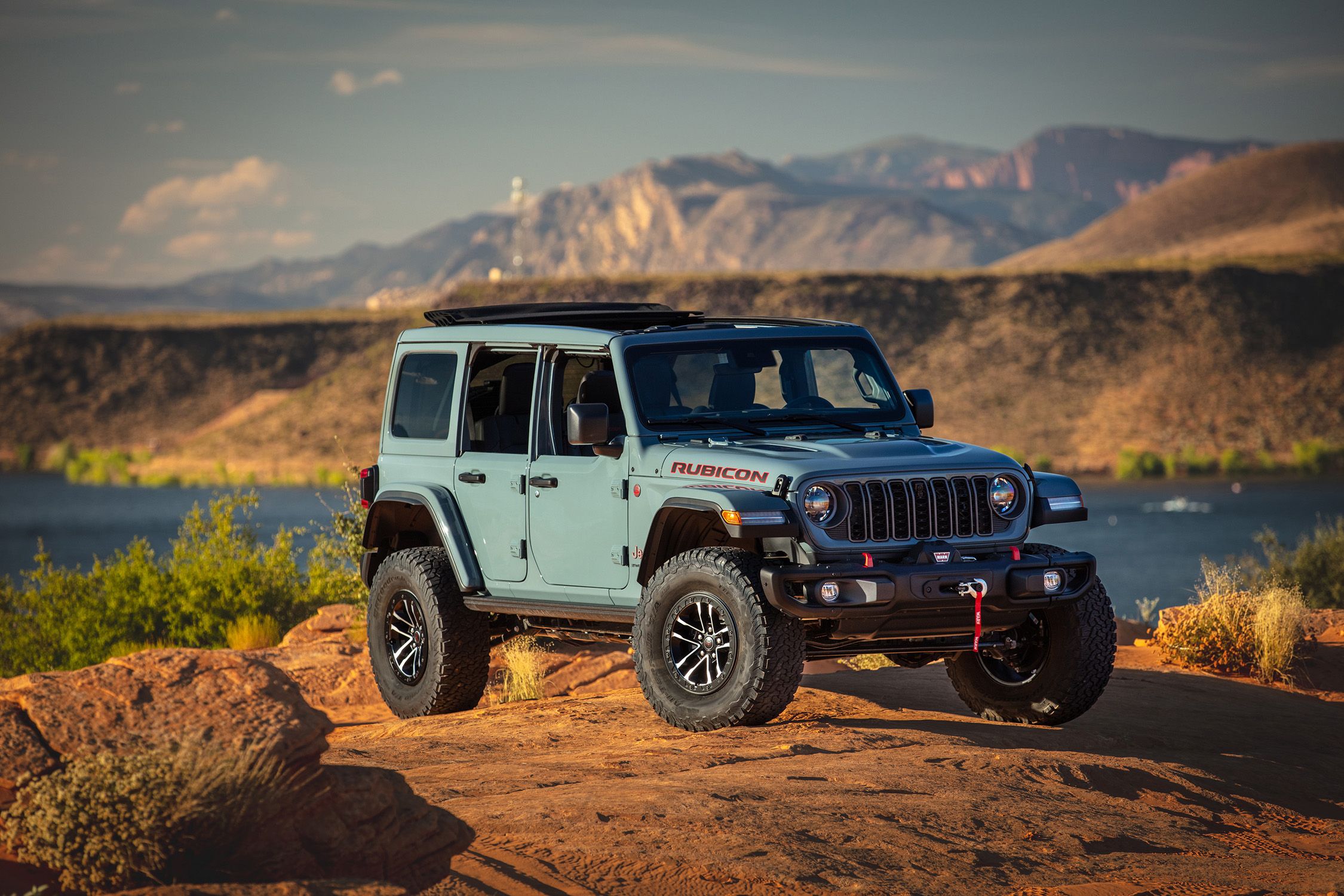
1. Jeep Wrangler Rubicon
The Jeep Wrangler Rubicon stands tall as the quintessential daily off-road machine, embodying everything Jeep enthusiasts cherish about rugged capability and legendary toughness. At the core of the Rubicon’s off-road prowess lies its rock-solid hardware—solid Dana 44 front and rear axles that provide immense strength and durability in the harshest conditions.
Unlike many SUVs that rely on independent suspensions, the Wrangler’s solid axles offer superior articulation, allowing its wheels to maintain contact with the terrain even on wildly uneven surfaces. This translates to unparalleled traction when climbing rocks, traversing ruts, or negotiating deep mud.
The electronic locking differentials in both front and rear axles ensure power is distributed evenly to all wheels, preventing wheel slip and boosting confidence on nearly any surface. Moreover, the disconnecting front sway bar enhances suspension articulation, allowing the wheels to move independently for maximum grip and stability off-road.
One of the Rubicon’s greatest strengths is how well it balances extreme off-road ability with surprising comfort and drivability for everyday use. While early Wranglers were criticized for their spartan interiors and rough ride, recent generations have dramatically improved cabin refinement, adding modern infotainment, supportive seats, and sound insulation—all without sacrificing durability.
The rugged interior materials withstand dirt, water, and wear, making post-adventure clean-up easier and less stressful. From a mechanical perspective, the powertrain options are robust and time-tested, with the V6 Pentastar engine delivering ample low-end torque and smooth power delivery, ideal for crawling over obstacles or powering through tough trail conditions.
The available 8-speed automatic transmission is responsive and durable, enhancing both on-road manners and off-road control.
Maintenance and aftermarket support further elevate the Rubicon’s status as a go-anywhere daily driver. Its simple, body-on-frame construction means that routine servicing and repairs can be performed easily by skilled DIYers or specialty shops familiar with Jeeps.
Parts are plentiful and affordable compared to luxury SUVs, which reduces long-term ownership costs—especially important for those who push their vehicle hard off-road every day.
In fact, many Rubicon owners report logging tens of thousands of trail miles without major issues, thanks to the model’s legendary build quality and engineering focused squarely on durability. Whether you’re crawling boulders in Moab or navigating muddy forest trails on a weekday morning, the Wrangler Rubicon is engineered to not only survive but thrive in daily off-road use.
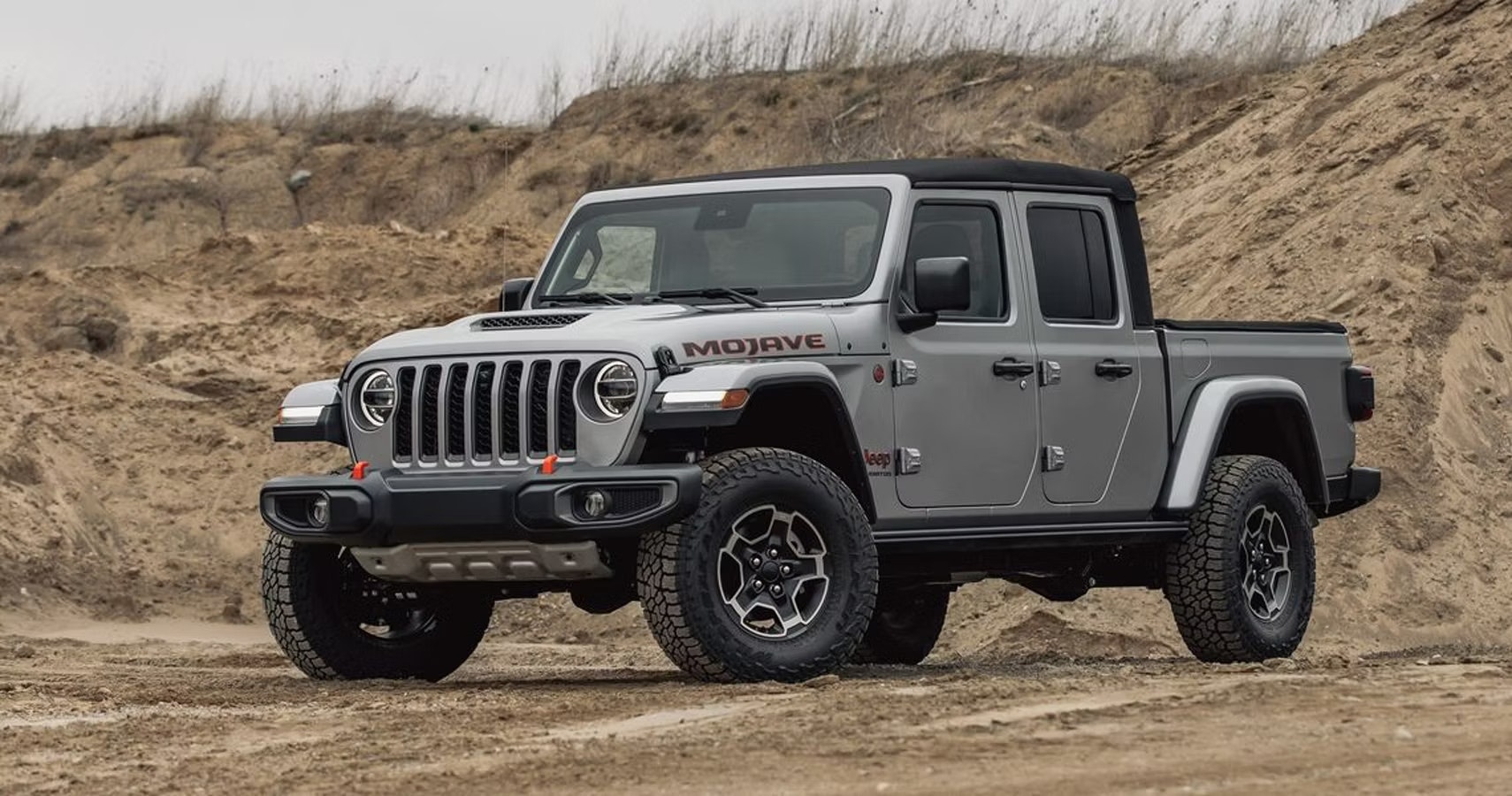
2. Jeep Gladiator Mojave
The Jeep Gladiator Mojave offers a unique blend of hardcore off-road durability with the utility and versatility of a midsize pickup truck, making it an excellent candidate for daily off-road warriors.
Purpose-built for desert running and high-speed trail blasts, the Mojave incorporates an array of heavy-duty components designed to absorb punishing terrain without compromising ride quality or reliability.
Its suspension features FOX internal bypass shocks, which provide progressive damping and excellent control over big jumps, whoops, and washboard roads. The reinforced frame and upgraded control arms ensure structural integrity even when subjected to high-speed impacts, vibrations, and torsional forces that might cause premature wear in less robust vehicles.
Another key aspect that makes the Mojave a daily off-road beast is its highly capable 4×4 drivetrain, including electronically locking front and rear differentials and a two-speed transfer case with low range.
This setup offers precise control over power distribution, ensuring optimal traction in diverse terrain types—whether you’re climbing loose dunes, rock crawling, or navigating deep ruts.
The suspension’s generous travel, combined with the high ground clearance, allows the Mojave to handle obstacles that would challenge other trucks in its class.
What truly sets the Gladiator Mojave apart, however, is its balance: while it is built to absorb desert abuse at speed, it remains comfortable and manageable on rougher, slower trails or even pavement, providing a surprisingly smooth daily ride despite its rugged construction.
Practicality is another strong suit for the Gladiator Mojave as a daily off-road vehicle. The open truck bed provides ample space for hauling gear, tools, camping equipment, or recovery supplies—essentials for frequent off-roaders. This utility means you can carry everything needed for extended adventures without compromising passenger comfort.
Inside, the cabin boasts durable materials that can withstand dirt and grime, with easy-to-clean surfaces and water-resistant features. Mechanically, the Gladiator shares many components with the Wrangler but benefits from Jeep’s continuous refinement aimed at improving reliability.
Owners praise its longevity, as many have traversed thousands of off-road miles with minimal major repairs, testifying to the Mojave’s robust engineering suited for daily, demanding use in the wildest environments.
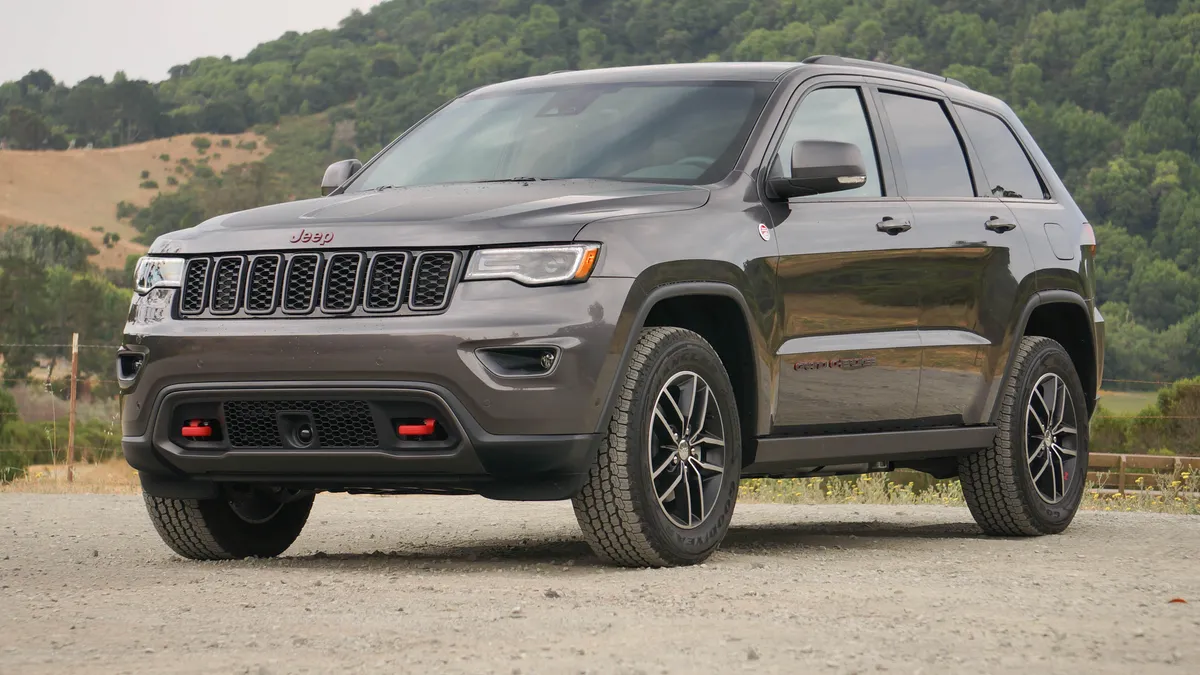
3. Jeep Cherokee Trailhawk
The Jeep Cherokee Trailhawk surprises many off-road enthusiasts who traditionally favored the Wrangler by delivering serious capability in a more refined, comfortable package.
Designed to bridge the gap between trail readiness and everyday usability, the Trailhawk features Jeep’s Active Drive Lock 4×4 system, which includes an electronically locking rear differential for improved traction.
Paired with the Selec-Terrain system, drivers can easily adjust the vehicle’s dynamics to suit various terrains such as mud, snow, rock, or sand. Unlike many crossover SUVs that simply offer all-wheel drive as an afterthought, the Cherokee Trailhawk’s drivetrain and chassis are engineered to handle moderate to challenging off-road conditions without breaking a sweat.
One of the biggest advantages of the Trailhawk lies in its unibody construction paired with off-road enhancements that enable a smoother, quieter ride than traditional body-on-frame trucks and SUVs. This makes it an excellent choice for those who want daily off-road capability but don’t want to sacrifice comfort on the pavement.
The suspension geometry and tuning are carefully optimized to absorb trail bumps while maintaining composure on highways, reducing driver fatigue during long commutes or extended adventures.
Inside, the cabin features durable yet comfortable materials that can withstand the occasional mud splash or dirt tracked in after a weekend excursion, with rubberized floor mats and washable surfaces that simplify cleaning.
Durability-wise, the Cherokee Trailhawk benefits from proven engines and drivetrain components shared with other reliable Jeep models. Its electronic aids, including hill descent control and trailer sway control, enhance safety and control during off-road driving, helping less experienced drivers navigate tricky terrain with confidence.
The vehicle’s compact size and maneuverability also enable it to access tighter trails that larger SUVs can’t. For daily off-roaders who need a versatile vehicle capable of both rugged trail rides and practical commuting, the Cherokee Trailhawk delivers a winning combination of capability, comfort, and reliability rarely found in this segment.

4. Jeep Grand Cherokee Trailhawk
The Jeep Grand Cherokee Trailhawk takes off-road luxury to new heights, providing a full-sized SUV with the heart and soul of a trail-capable Jeep.
Underneath its premium exterior lies a suite of serious off-road hardware, including Jeep’s sophisticated Quadra-Drive II 4×4 system, which utilizes electronic limited-slip differentials to dynamically adjust torque distribution for maximum grip.
The available Quadra-Lift air suspension system dramatically enhances off-road performance by offering adjustable ride height, allowing drivers to raise the vehicle for additional ground clearance or lower it for improved aerodynamics and easier entry on pavement.
This adaptive suspension makes the Grand Cherokee Trailhawk well-suited for a range of conditions, from crawling rocky trails to cruising highways comfortably.
The Trailhawk trim also benefits from Jeep’s advanced Selec-Terrain system, which offers multiple driving modes tailored for off-road surfaces, including mud, rock, snow, and sand. This system optimizes engine response, transmission shift points, and traction control to give drivers confidence and control in challenging environments.
The vehicle’s off-road credentials are matched by its interior luxury, with premium materials designed to withstand outdoor use without compromising comfort. The durable leather and soft-touch surfaces resist wear and tear, while the infotainment and safety tech provide convenience and peace of mind during daily drives.
From a mechanical standpoint, the Grand Cherokee Trailhawk’s powerful V6 and optional V8 engines supply abundant torque for demanding off-road maneuvers, while its braking and stability control systems are tuned for precise control on slippery or uneven surfaces.
The Trailhawk’s combination of luxury, technology, and rugged hardware makes it an exceptional daily off-road vehicle for drivers who demand both refinement and capability. It can endure rough terrain repeatedly without compromising reliability or comfort, making it a favorite among adventurers who want a full-sized SUV that truly performs when the pavement ends.
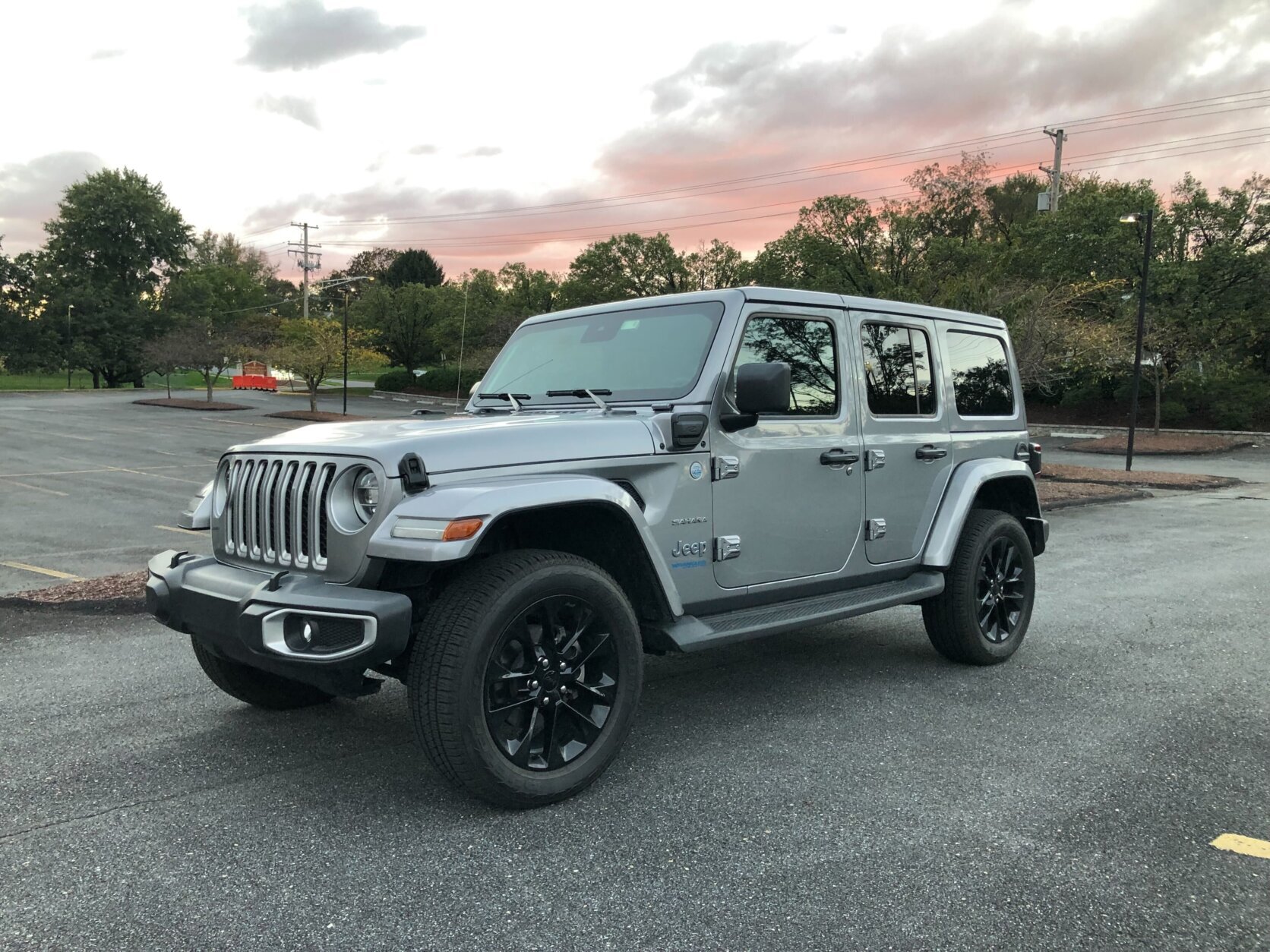
5. Jeep Wrangler Unlimited Sahara
The Jeep Wrangler Unlimited Sahara provides a compelling package for those seeking a more versatile daily off-roader with a bit more refinement and space than the standard two-door Wrangler. Featuring a longer wheelbase and four doors, the Unlimited Sahara adds stability and passenger comfort without diluting the Wrangler’s famed off-road DNA.
Though it doesn’t come with some of the more extreme hardware found on the Rubicon, such as locking front differentials or sway bar disconnects, the Sahara’s robust solid axles, skid plates, and rugged tires still provide plenty of capability for most off-road scenarios encountered daily.
What truly makes the Unlimited Sahara excel as a daily off-road vehicle is its well-tuned suspension that strikes a commendable balance between trail readiness and on-road comfort. Its coil spring setup and shock absorbers are engineered to absorb bumps and potholes without making the ride overly harsh or fatiguing.
This means drivers can comfortably spend hours navigating rough trails, dirt roads, or uneven urban environments while still enjoying a relatively smooth ride. Inside, the Sahara features durable yet stylish interior appointments, including weather-resistant seat materials and removable carpets for easy cleaning after muddy excursions.
Furthermore, the Wrangler Unlimited Sahara benefits from modern powertrains that offer improved fuel efficiency and performance compared to earlier generations, including the turbocharged 4-cylinder and V6 engines. The vehicle’s simple mechanical layout and body-on-frame construction simplify repairs and maintenance, a major plus for those who put their Jeep through daily off-road paces.
Combined with its advanced safety features and customizable options, the Sahara Unlimited remains a versatile and reliable choice for enthusiasts who want a capable Jeep that can take the daily off-road grind in stride while providing practical space and comfort for everyday use.
5 Jeeps That Barely Survive Pavement

1. Jeep Compass (Early Models)
The early Jeep Compass models, particularly those produced between 2007 and 2016, have a reputation for struggling when subjected to the rigors of daily pavement driving, especially over the long term. Unlike Jeep’s traditional rugged SUVs, the Compass was designed more as a compact crossover aimed at casual buyers rather than hardcore off-roaders.
Unfortunately, this design approach resulted in a vehicle that often feels underbuilt and fragile when pushed beyond light suburban use.
The suspension system on early Compass models, featuring a torsion beam rear axle rather than an independent setup, contributes to a notably stiff and uncomfortable ride on rough pavement. Drivers often report excessive noise, vibration, and harshness, making long trips or daily commutes on uneven roads tiring and unpleasant.
Mechanically, the Compass’s powertrains have been a source of frustration. Many models came equipped with underpowered 2.0L or 2.4L four-cylinder engines that struggle with acceleration and highway merging, putting extra strain on transmissions and leading to premature wear.
The continuously variable transmission (CVT) on certain trims exacerbates the issue, as it is prone to overheating and failure when frequently driven in stop-and-go traffic or hilly terrain.
Additionally, the Compass’s chassis and structural integrity have been criticized for a lack of solidity and refinement, resulting in noticeable flex and creaks during everyday driving. Owners have also reported frequent electrical glitches and sensor malfunctions, adding to the perception of unreliability.
When it comes to longevity, early Jeep Compass models rarely reach high mileage without significant repairs. Rust issues have been documented, especially in regions with harsh winters and road salt usage, which further undermine the vehicle’s durability on pavement.
The ride quality, combined with mechanical vulnerabilities, results in a vehicle that many owners find frustrating to maintain and drive daily. For those looking for a Jeep that can truly endure pavement and off-road challenges alike, the early Compass falls short, feeling more like a city crossover than a rugged Jeep.
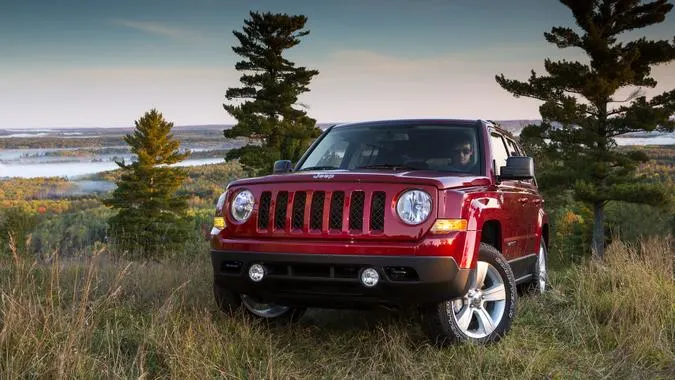
2. Jeep Patriot
The Jeep Patriot, which shared its platform with the Compass, similarly struggles to cope with the demands of daily paved driving. Introduced in 2007 and discontinued in 2017, the Patriot aimed to offer an affordable entry point into the Jeep lineup but sacrificed many comfort and durability features in the process.
One of the Patriot’s most glaring weaknesses is its outdated suspension system, which uses a torsion beam rear axle that delivers a harsh and jarring ride on uneven pavement.
Compared to more modern independent suspension setups, the Patriot’s system cannot absorb bumps and potholes effectively, transmitting shocks directly into the cabin and leading to driver fatigue during longer drives.
The interior quality and noise insulation of the Patriot are notably poor, compounding the discomfort on pavement. Road and wind noise penetrate the cabin extensively, while the cheap plastic materials rattle and degrade quickly over time. This not only affects comfort but also signals a lack of long-term durability in the materials used.
Under the hood, the Patriot’s 2.0L and 2.4L inline-4 engines provide only modest power, often struggling to keep pace with highway speeds and steep inclines.
The available CVT transmissions have been notoriously unreliable, with many owners reporting premature failures, harsh shifting, and overheating during routine city driving or highway use. This creates an ongoing maintenance burden that erodes the Patriot’s value as a dependable daily driver.
Structurally, the Patriot’s chassis lacks the rigidity and reinforcement found in more capable off-road Jeeps, which makes it vulnerable to premature wear, especially on paved roads that present constant vibration and stress. Suspension bushings, ball joints, and other components often wear out earlier than expected, resulting in costly repairs and frequent trips to the mechanic.
The Patriot’s low resale value and high maintenance costs reflect its difficulty surviving daily pavement use, marking it as one of the less durable Jeep models for everyday urban and suburban environments.
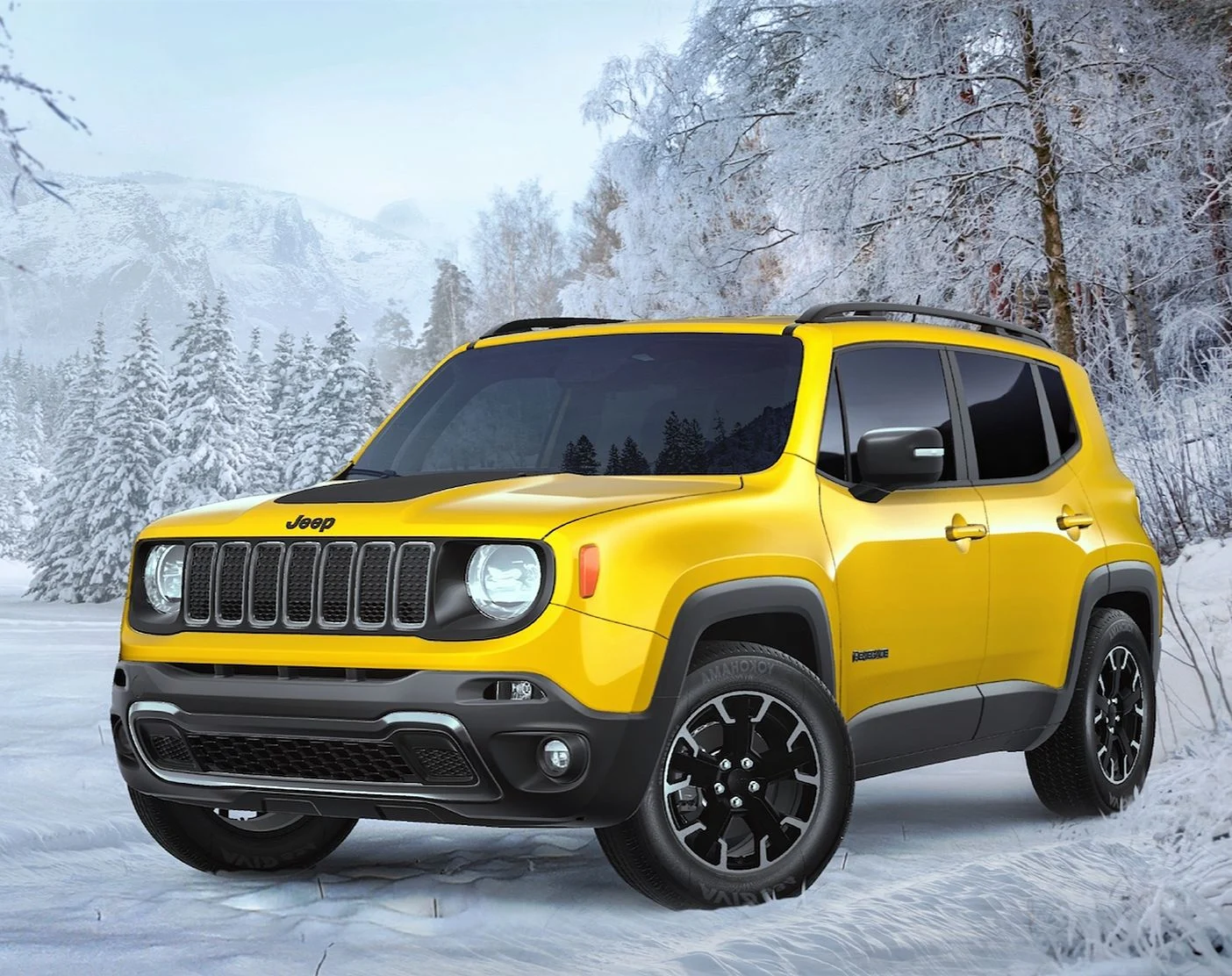
3. Jeep Renegade (Early Models)
The early Jeep Renegade, introduced in 2015, presents an interesting case of a small Jeep with some off-road pretensions but notable shortcomings on paved roads. While the Renegade’s styling and compact size attracted urban buyers seeking a Jeep badge, its engineering reveals several flaws that affect durability and comfort during daily street driving.
The initial model years featured a soft suspension setup designed more for style than substance, resulting in a bouncy and unsettled ride on highways and rough city streets. The Renegade’s short wheelbase further amplifies these issues, making the vehicle prone to twitchy handling and excessive vertical motion over uneven pavement.
Mechanical reliability has been another point of contention. Early Renegades often came with small turbocharged engines that, while offering decent power on paper, have been reported to suffer from turbo lag, rough idle, and occasional stalling. These engine issues, combined with transmissions that sometimes hesitate or shift erratically, detract from smooth daily driving experiences.
Owners have also reported electrical gremlins affecting infotainment, power windows, and dashboard warning lights, causing inconvenience and costly repairs. The relatively high maintenance and repair frequency for these early models limits their appeal as a daily driver for those who value trouble-free pavement performance.
The Renegade’s interior also struggles under daily use. Although it features Jeep’s distinctive design cues, many materials feel cheap and prone to premature wear. Seats lack adequate support for extended highway driving, and noise insulation is insufficient to block out road, engine, and wind noise effectively.
Over time, owners report creaks and rattles developing in the cabin, further reducing the vehicle’s refinement and long-term appeal. For buyers who intend to use their Jeep predominantly on paved roads, early Renegades tend to show their weaknesses fairly quickly, leading many to seek more robust alternatives for daily driving.
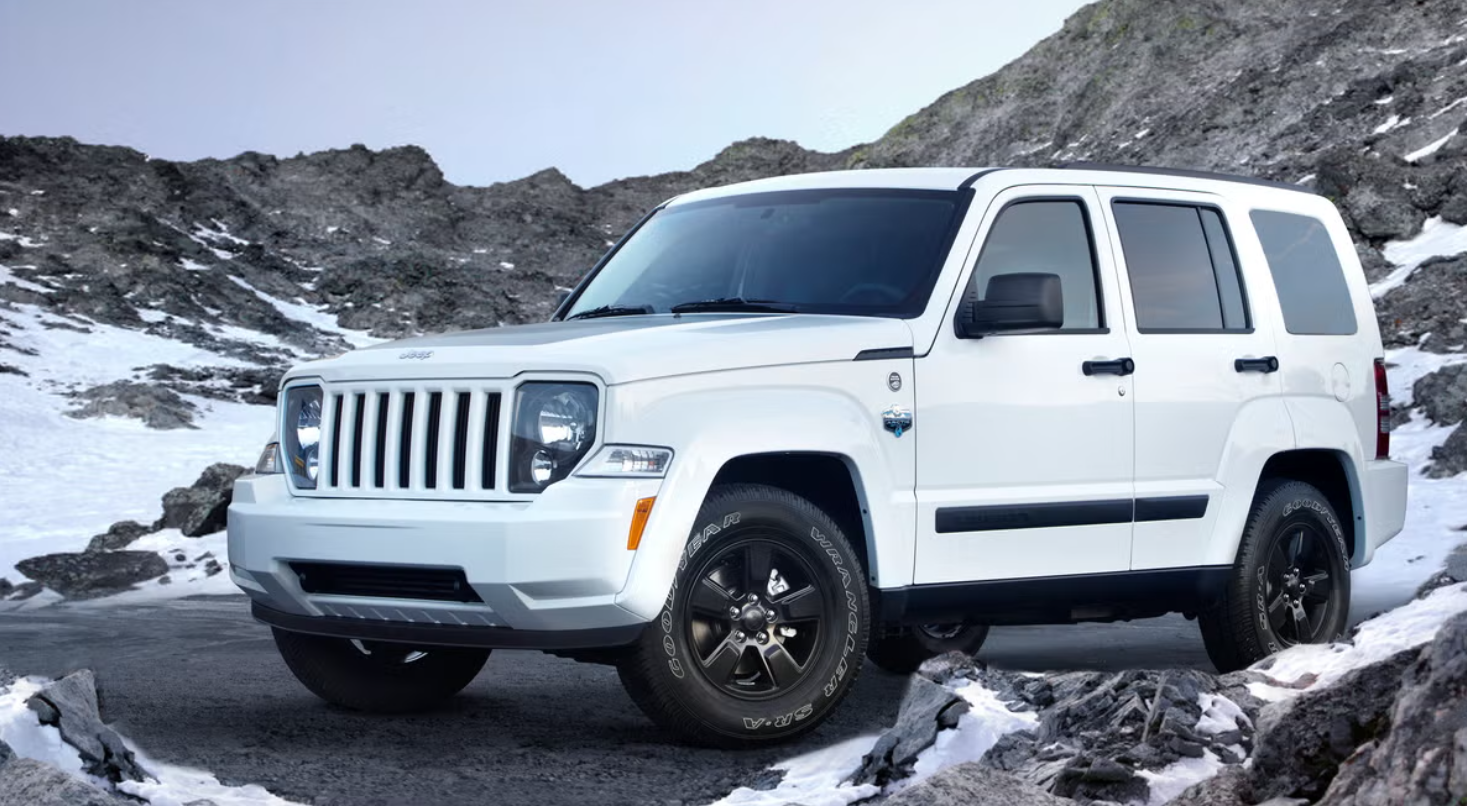
4. Jeep Liberty (KJ and KK Models)
The Jeep Liberty, particularly the KJ (2002-2007) and KK (2008-2012) generations, occupies a unique space in Jeep’s history but is often criticized for its inability to thrive on paved roads without issues. While these models are often praised for their off-road capability, their engineering compromises make them less suited to daily urban and highway use.
The Liberty’s suspension setup, though adequate off-road, delivers a harsh, truck-like ride on pavement. Drivers frequently describe the Liberty as stiff and uncomfortable when navigating rough city streets or long-distance highway journeys, with a tendency for the chassis to transmit excessive vibrations and noise into the cabin.
The mechanical reliability of these Liberties also raises concerns, especially as they age. The KJ models are notorious for issues such as cooling system failures, premature transmission wear, and problematic electrical systems. The KK generation improved some of these aspects, but still suffers from transmission complaints, including rough shifting and failure in some cases.
Both generations have relatively poor fuel efficiency, which compounds the cost of ownership for those using them as daily drivers. Additionally, the Liberty’s steering feel is often described as vague and unresponsive, which reduces driver confidence and comfort on paved roads.
Interior quality further diminishes the Liberty’s appeal for pavement survival. The cabin features dated materials that wear unevenly, with plastic panels prone to cracking and seats that degrade quickly under heavy use. Noise insulation is minimal, allowing engine roar and road noise to fill the cabin at highway speeds.
Maintenance costs can be high, especially as these vehicles accumulate miles, with frequent repairs needed to keep suspension components, drivetrain, and electrical systems in working order. While the Liberty shines in off-road conditions, it struggles to provide a smooth, reliable, and comfortable experience for drivers who spend the majority of their time on paved surfaces.

5. Jeep Wagoneer (Early Models)
The early Jeep Wagoneer, produced predominantly in the 1960s through the early 1990s, was an iconic full-size SUV but has significant challenges surviving daily modern pavement use without extensive restoration and maintenance. Its vintage body-on-frame design and large, heavy steel construction give it a commanding presence, but these same traits translate into a cumbersome and inefficient daily driver by today’s standards.
The Wagoneer’s suspension, while rugged, is outdated by modern standards, resulting in a ride that is both stiff and floaty, uncomfortable and unpredictable on modern pavement. The lack of modern suspension technologies means it cannot effectively absorb the irregularities of asphalt, leading to driver fatigue and passenger discomfort.
Mechanically, these early Wagoneers were equipped with large-displacement V8 engines that offered plenty of torque but lacked modern fuel injection and emissions control systems. This leads to poor fuel economy and inconsistent engine performance, especially in stop-and-go traffic or urban environments.
The aging transmissions, often three- or four-speed automatics, do not shift as smoothly or efficiently as contemporary gearboxes, leading to jerky acceleration and increased wear. Additionally, parts scarcity for these vintage vehicles can make maintenance difficult and expensive, particularly if the vehicle is subjected to daily pavement use rather than occasional recreational driving.
The Wagoneer’s interior, while luxurious for its time, fails to meet modern expectations for comfort, noise control, and convenience. Hard, non-insulated materials dominate the cabin, allowing wind and road noise to intrude heavily. The seats, often bench style in early models, lack the ergonomic support necessary for comfortable daily driving.
Electrical systems are rudimentary and prone to faults with age, and rust remains a persistent issue due to the vehicle’s age and body construction methods. While the Wagoneer holds nostalgic value and remains a classic off-road icon, it is far from ideal as a daily pavement survivor without significant upgrades and careful maintenance.
Also Read: 5 Luxury SUVs That Last a Decade and 5 That Constantly Need Fixes
In conclusion, Jeep’s rich legacy of off-road excellence comes with a spectrum of vehicle designs and engineering philosophies, resulting in some models that can endure grueling daily off-road use with ease, and others that falter when faced with the demands of everyday pavement driving.
The five Jeep models highlighted as daily off-road champions demonstrate that ruggedness, thoughtful mechanical design, and well-engineered suspensions create vehicles that owners can rely on for countless miles of trail adventures without sacrificing comfort or reliability.
These Jeeps embody the brand’s spirit of exploration while addressing the practical needs of drivers who require durability and versatility in equal measure. Their balance of rock-solid hardware, dependable powertrains, and driver-focused technology makes them excellent choices for anyone who lives life off the beaten path but still needs a vehicle they can trust every day.
Conversely, the Jeeps that barely survive pavement use serve as cautionary tales of what happens when design compromises, outdated components, and underdeveloped engineering converge. From harsh suspension setups to fragile transmissions and noisy cabins, these models highlight the importance of understanding your Jeep’s strengths and weaknesses relative to your primary driving environment.
Frequent repairs, uncomfortable rides, and premature component failures can erode the joy and practicality of Jeep ownership, especially when the vehicle spends most of its time on paved roads. For prospective buyers, recognizing these limitations is essential to avoid costly ownership experiences and to find a Jeep that truly fits their lifestyle and expectations.
Ultimately, Jeep ownership is a rewarding experience when you choose a model that aligns with your needs, whether that means a rock-crawling Rubicon, a capable Gladiator Mojave, or even a Trailhawk that balances off-road aptitude with urban convenience.
Understanding the distinct capabilities and pitfalls of each model empowers drivers to make informed decisions, enjoy their Jeeps to the fullest, and ensure their vehicles last for years to come. In a brand known for adventure and durability, selecting the right Jeep for your daily use, on or off pavement, is the key to unlocking the true potential of this iconic American marque.
Whether your adventures take you deep into rugged wilderness or across city streets, the right Jeep can become an extension of your adventurous spirit, ready to endure the challenges ahead with resilience and dependability. Choose wisely, drive confidently, and let your Jeep carry you through countless miles of memorable journeys.
